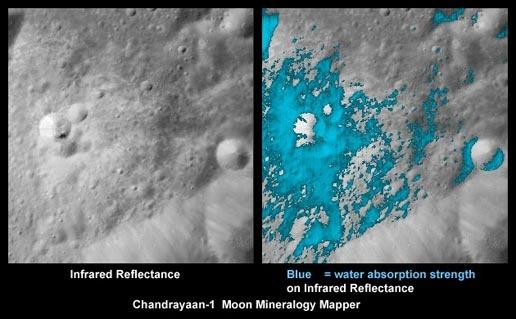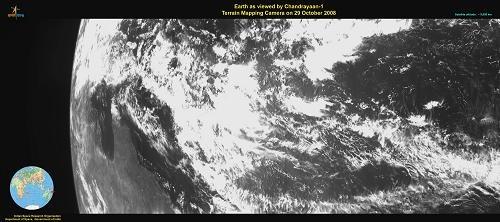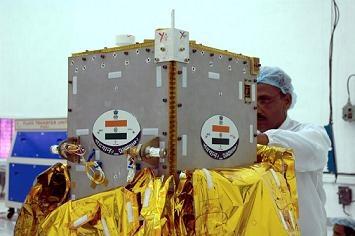Chandrayaan-1, Indias first mission to Moon, launched on October 22, 2008 from Satish Dhawan Space Centre, Sriharikota, has completed eight months of successful operation and has made 3,000 revolutions around the Moon. Besides sending more than 70,000 images of the lunar surface which provide breathtaking views of lunar mountains and craters, especially craters in the permanently shadowed areas of the Moons polar region, Chandrayaan-1 spacecraft is also collecting valuable data pertaining to the chemical and mineral content of the Moon. Chandrayaan-1s orbit was raised from 100 km to 200 km circular on May 19, 2009. The high orbital altitude of Chandrayaan-1 reduces the resolution of the imagery but provides a wider swath and the data is of good quality.
The onboard star sensor used for determining the orientation of the spacecraft started malfunctioning on April 26, 2009. To overcome this anomaly, ISRO devised an innovative technique of using redundant sensors gyroscopes along with antenna pointing information and images of specific location on the surface of the moon, for determining the orientation of the spacecraft. This method has been validated and based on this information, mission operations are being carried out satisfactorily. Other than the failure of the star sensor and one of the Bus Management Units, health of the spacecraft is normal.
Recent review by scientists has confirmed that all primary mission objectives of Chandrayaan-1 have been successfully realised during the eight months of its operation. The spacecraft continues to send high quality data as per planned sequence to its ground station at Byalalu near Bangalore. Detailed review of the scientific objectives and the performance results on the Chandrayaan-1 mission is scheduled within three months after which further operational procedures will be worked out.
With the successful realisation of these objectives, additional data that will be derived during the remaining part of Chandrayaan-1s life will be complementary to already derived information.
The data collected from Chandrayaan-1 instruments have been disseminated to the Indian scientists and also the partners from Europe and USA. The scientific community is extremely happy with the already obtained data and the results of analysis could be expected in about 6 months to 1 year period.


